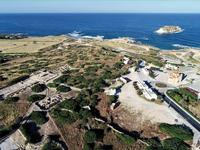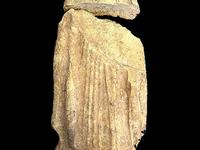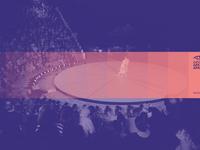Press Releases

27-11-2024 13:06
Completion of the fourth excavation season for 2024 at Kouklia-Marchello archaeological site by the University of Athens
The Department of Antiquities, Deputy Ministry of Culture, announces the completion of the fourth excavation season for 2024 at Kouklia-Marchello (Palaepaphos) by the Department of History and Archaeology of the National and Kapodistrian University of Athens (NKUA). The excavation was funded by NKUA and carried out by a team of 12 undergraduate, postgraduate, and doctoral students under the direction of Professor of Archaeology Konstantinos Kopanias. Warm thanks are due to the community of Kouklia, who generously provided meals and accommodation for the students.
A series of investigations at Marchello has been conducted by a British (1950-55) and a Swiss-German archaeological mission (1966-73, 1985, 1992-95), as well as more recently by the University of Cyprus (2006-08). Earlier investigations revealed part of a monumental 168-meter-long wall, though its excavation was never fully completed. The dating of the individual construction phases of the wall, as well as its overall interpretation, remains unresolved.
The previous excavation seasons of the NKUA provided significant new evidence, confirming the existence of an earlier phase of the wall, which dates to the Late Cypriot IIC period (13th century BC). However, the dating of the later construction phases remained problematic. During the 2024 excavation season, emphasis was placed on investigating a tunnel that cuts across the wall at a depth of 2.3 meters. Careful excavation of the tunnel allowed for a more comprehensive understanding of the stratigraphy and the dating of the later phases of the wall. New evidence emerged supporting F. Maier’s view that the wall was repaired during the Cypro-Archaic and later in the Cypro-Classical period. However, the earlier theory suggesting that the tunnels found in various sections of the wall were constructed in 499/498 BC, during the siege of Palaepaphos by the Persians, was not confirmed. The purpose of these tunnels remains enigmatic for the time being, and it is hoped that future findings will offer new insights into their interpretation.
The 2024 excavation also focused on investigating a monument located to the north of the wall, in close proximity to it, which has a "Π" shape and faces the sea. Previously, it was thought that this structure was part of the fortifications and functioned as a defensive tower. However, the new excavation revealed that it is not connected to the wall and likely had a cultic function. The currently available excavation data indicate that it was founded in a layer from the Late Cypriot III period (12th-11th century BC), fell into disuse during the Cypro-Geometric period, and was later repaired during the Cypro-Archaic period (6th century BC). In 2023, depictions of two engraved ships were found on the outer side of this enigmatic structure, resembling similar depictions of boats at Kition. In 2024, another depiction of a ship was discovered, though it remained unfinished.
A remarkable find from this year’s excavation season was a small, fragmentary inscription in the Cypriot syllabary, found in secondary use, embedded in a wall from the Cypro-Archaic period. The findings from the study of the inscription are eagerly anticipated.
The NKUA excavation is conducted in close collaboration with the ongoing Palaepaphos Urban Landscape Project (PULP) of the University of Cyprus, directed by Professor Maria Iacovou. The close cooperation between the two research teams contributes to the preservation and scientific promotion of the archaeological heritage of the broader Palaepaphos region. The fifth annual NKUA mission will take place in 2025.
(EK)
Relevant Press Releases


22-11-2024 11:25
The “Royal Chapel” of Agia Aikaterini at Pyrga closed for the public





